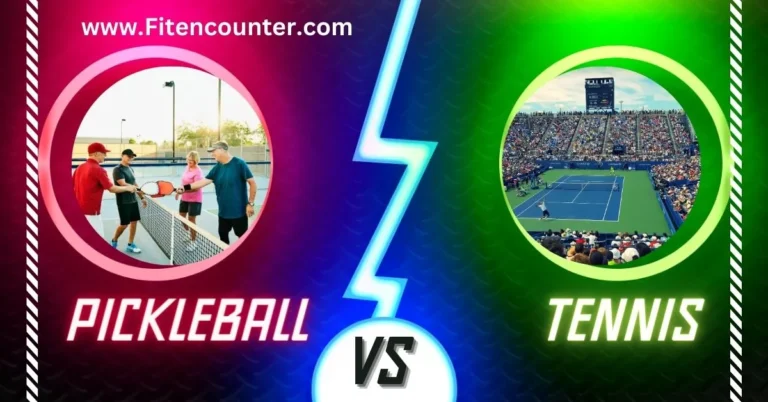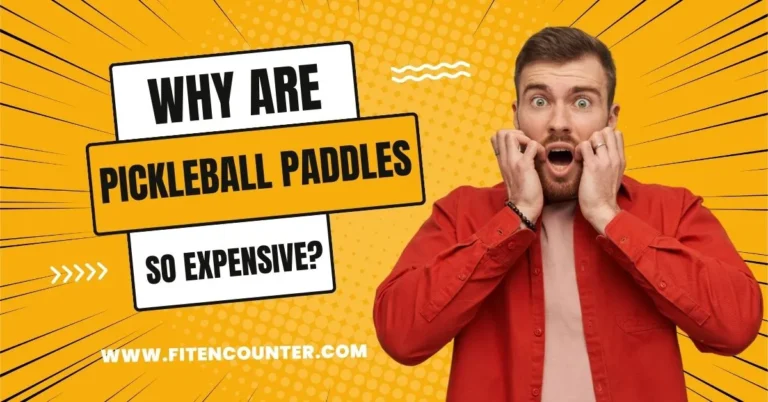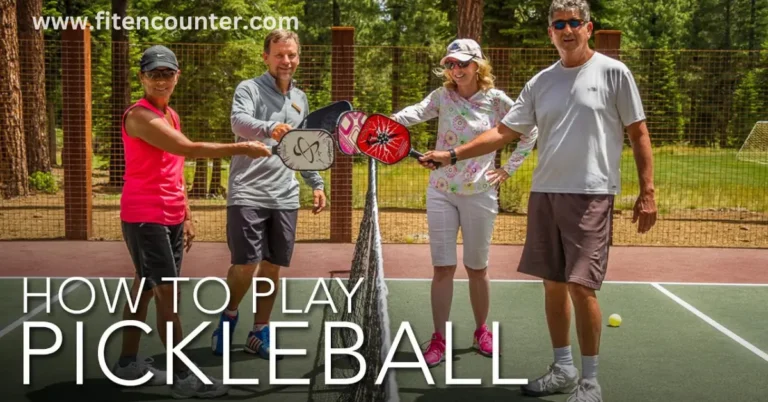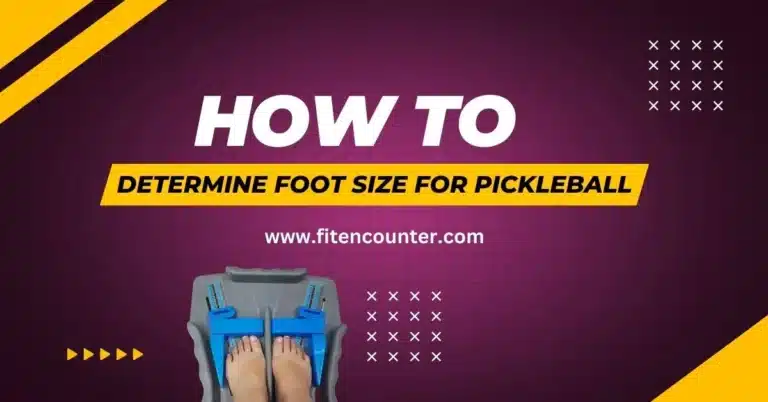What Are Pickleball Paddles Made Of? Which Material is Used?
Pickleball paddles are sturdy, and they last up to several years. All of this is possible because of their durable manufacturing and the materials used in manufacturing. So, when it comes to their longer lives, many people wonder what pickleball paddles are made of.
They were initially constructed out of wood in the mid-20th century. Since then, there have been a variety of materials from which pickleball paddles are made today.
While talking about what they are made of, it’s important to note that there are 2 things you need to be mindful of in this matter: The Surface Materials and the Core Materials.
The surface materials are what the outside of the paddle is made of, while the core materials are what the innermost structure of the paddle is made of. Both have equal importance.
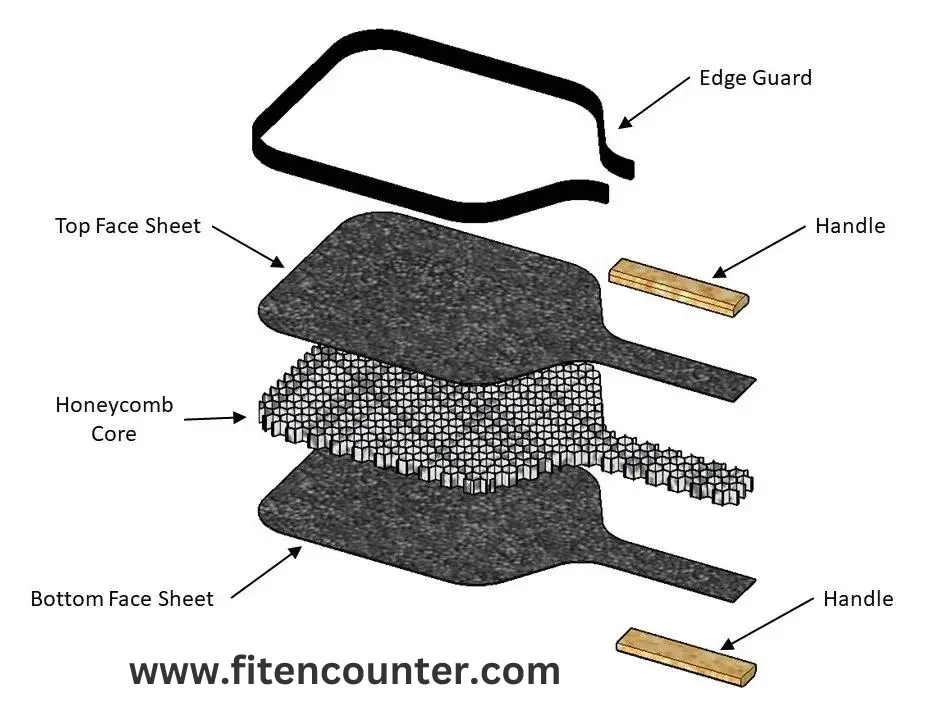
In this guide, I will walk you through the different types of pickleball materials, both surface and core and what the best pickleball material is. I will also explain the advantages and side-effects of each material and which combination is best for different players. Let’s get started.
What are Different Types of Pickleball Paddle Surface Materials
Pickleball paddles are made of different materials. Each of these materials comes with its properties and how they contribute to the game. Let’s go over each of them in detail:
1. Graphite Surface Paddles
Graphite paddles are the lightest ones out there. These paddles are thick enough and are easy to hold. Because they’re not that heavy, players can swing them with maximum efficiency.
While lighter, Graphite paddles are rigid and do not bend easily. Bendness is a big issue in paddles, after which they become useless. This stiffness helps players have better control over the ball when they hit it. The paddle’s stiffness also ensures that every hit is predictable, so players know what to expect. This makes the game more reliable and helps players feel more confident.
This material also gives players a fantastic balance of power and control. They’re not too powerful, so players need to use their skills to make a good shot. People who like to have much control over the ball often select graphite paddles. These paddles allow players to hit the ball exactly where they want it to go.
Graphite paddles are appropriate for all types of players, from beginners to specialists. Because they’re easy to use and give players reasonable control, they are great for informal games or extreme competitions.
2. Carbon Fiber Paddles
Carbon fiber paddles are recognized for their stiffness, lightness, and durability like graphite paddles. They offer a smooth surface to strike the ball, guaranteeing consistent performance.
Additionally, their lightweight construction allows players to move around quickly on the court. Carbon fiber paddles are also incredibly long-lasting. They can withstand the challenges of playing too much without losing their structural integrity. Also, check the Pickleball vs Tennis.
Players who use a carbon fiber paddle have outstanding control over their shots. The paddle’s stiffness and responsiveness enable players to perform unique movements, allowing for precise ball positioning.
Carbon fiber paddles have a lot of similarities with graphite paddles, but they also bring their unique qualities to the game:
3. Fiberglass Paddles
Fiberglass paddles are made by compressing fibers together with heat. This process creates a long-lasting and lightweight paddle, making it easy to use throughout games.
Are fiberglass pickleball paddles good? These paddles can hit the ball hard, so they’re best for making solid shots. However, they can be harder to control because they’re so powerful.
One advantage of fiberglass paddles is that they have a more significant area, which means you have a better chance of hitting the ball perfectly, even if you don’t hit it exactly in the middle of the paddle.
Here are some considerations for the players who want to use Fiberglass paddles:
4. Wooden paddles
Wooden paddles are the first ones ever used in pickleball. These are genuinely special because they remind us of how the game began. They’re made entirely of wood, giving them a classic and old-school feel.
When you play with a wooden paddle, it feels robust and solid but also a bit heavy. They’re more challenging than the latest paddles, meaning hitting the ball in the right direction is more complicated.
Are wooden pickleball paddles good? While wood paddles can last a long time, they may also only hold up with a limited amount of use. They’re not the finest choice for extreme games or playing for a long time because they’re heavier and not as easy to hit.
Nevertheless, a few players like using them for fun games and to keep the spirit of pickleball alive.
5. Hybrid Paddles
Hybrid paddles are made not of one particular material but by combining materials like graphite, fiberglass, and carbon fiber. This mix of substances gives the paddle an excellent balance of power and control.
Using a hybrid paddle feels flexible. You can hit the ball with strength and precision. Here are some benefits it offers:
Hybrid paddles are a top choice if you want a strong, versatile, and excellent paddle for all players. They’re famous for pickleball lovers who need a paddle to do it all on the court.
In my opinion, Hybrid Paddles are the best Pickleball Paddle materials.
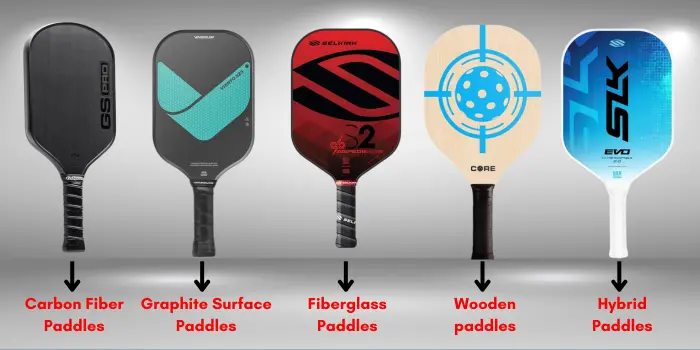
Pickleball Paddle Core Materials: Ranked From Best to Worst
We have discussed the surface materials of Pickleball paddles. Now, let’s discuss the next important thing: The Core Materials. These are not what you see on the outside of the paddle, but they deeply affect your game. Let’s go over the 3 types of core materials from “the best” to “not good”:
1. Polymer Cores
Polymer cores are the most common material used inside pickleball paddles, and they have some great benefits:
When you’re playing with a paddle that has a polymer core, some things can affect how it feels:
2. Nomex Cores
Nomex cores are a unique form of material used in making pickleball paddles. These are made by the company DuPont. Nomex is known for being very strong and resistant to heat. These paddles have a lot of power but can be hard to control.
You must focus on your technique to manage the power of Nomex paddles. You want to avoid hitting the ball out of bounds accidentally. If you’re struggling to control the power, try adjusting other things, like the paddle’s weight or the type of grip you use.
3. Aluminum Cores
Aluminum cores are less common in pickleball paddles. They’re lightweight but lack strength.
Are Aluminum pickleball paddles good? Playing with an aluminum-cored paddle may give you more control over your shots but much less power. They’re suitable for players who must focus on accuracy instead of hitting hard.
Beginners and players who like finesse over strength like them. However, skilled players who depend on effective shots won’t find them appropriate. Otherwise, aluminum core paddles are light and provide reasonable control. They are an excellent choice for precision play.
How to Choose the Perfect Pickleball Paddle Material?
When selecting a pickleball paddle, some factors should be considered: power, control, weight, and how you play. If you like hitting hard, look for materials like fiberglass—they give extra power. But if you decide on accuracy, graphite or polymer is probably better—they provide greater control.
Weight is also significant. Lighter paddles are more straightforward to deal with, while heavier ones give you more tremendous energy. So, see what feels right for you.
Your playing style matters, too. If you play aggressively, you might need a paddle that packs a punch. But if you’re more about finesse, a paddle with better control can be your pick.
For beginners, starting with a paddle that’s easy to control is good. Graphite surface and polymer core paddles are great for this. They’re lightweight and provide top balance.
But it is about finding the proper balance for experienced players who know their style well. A hybrid paddle—mixing substances like fiberglass and graphite—could give you the best of both worlds: power and control.
Remember, it is not just about the core and surface materials. Grip size, paddle shape, and handle length also matter. So, take your time and try out different paddles to see what feels best for you.
| Material | Weight | Power | Control | Durability |
| Graphite | Lightweight | Moderate | High | Moderate |
| Carbon Fiber | Lightweight | Moderate | High | High |
| Fiberglass | Lightweight | High | Moderate | High |
| Hybrid | Varies | Varies | Varies | Varies |
| Wooden | Heavy | High | Low | Low |
| Polymer | Lightweight | Moderate | Moderate | High |
| Nomex | Lightweight | High | Low | High |
| Aluminum | Lightweight | Low | High | High |
Frequently Asked Questions
Is there a pickleball paddle that has different materials?
Hybrid pickleball paddle surfaces have a blend of materials like fiberglass and graphite. They’re perfect if you want both power and control.
What’s the best pickleball paddle surface for new players?
New gamers should pass for lighter paddle surfaces like graphite or polymer. They’re less complicated to handle and help you learn the game better.
Which pickleball paddle surface has the most power?
Fiberglass and Nomex paddle surfaces provide more power because they are strong. They’re outstanding if you want to hit hard shots.
How do I pick the right weight for my pickleball paddle?
Think about how you play and what feels comfortable. Light paddles are more straightforward to move, but heavier ones can provide more power. Choose what feels best for you.
Conclusion
Regarding what Pickleball paddles are made of, it’s clear that there are several materials to choose from. Whether you are a beginner or an experienced player, you must select the proper paddle material to optimize your gameplay.
Factors such as power, control, weight, and even grip size are prominent in figuring out the perfect paddle for you. Considering those elements and exploring the options available, you can find a pickleball paddle that perfectly matches your playing style and options.
Be mindful of both the Surface materials and the Core materials. Select the combination that suits your playstyle the best.

